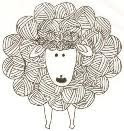Mr S's mother wanted him to remain a single parent so that she could have daily contact with her two grand-daughters (here I should point out that the only good thing that Mr S did, in her eyes that it is, was to father two girls). His arrival as a second boy was her big disappointment, but as he had been born at home she couldn't deny him as she had his brother five years earlier.
My mother had decided that I was to be her carer and companion in her old age as a dutiful daughter should. A role that she deemed I that I was eminently suitable for as a widow and a female. Indeed this role was, she considered, to be my only redeeming feature as I had failed to be the son she had so wanted forcing her to endure a second pregnancy to produce the desired son.
Well we didn't listen and selfishly put ourselves first - so 25 years ago yesterday (May 20th) we tied the knot and yesterday we revisited our honeymoon venue. With only one day we had spent what we grandly called our 'honeymoon' on a steam train. To be precise we traveled from Kidderminster to Bridgenorth and back again - First Class!
Well we couldn't replicate the journey exactly, because there isn't a First Class guard's van - which is where wheelchairs users have to travel on preserved railways - but we did have a fabulous day on the Sir Keith Park, which sadly was
a Southern engine, not a Great Western engine (:
We bought each other a silver sheep and a Pine Cone carved with a chain saw!
And despite all the dire warnings it has lasted and we are still together, so here's to the next 25 which we will both need if we are to use up our wood and wool stashes....






